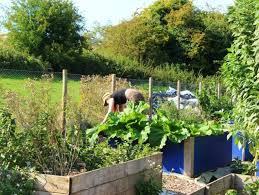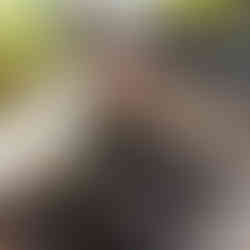Of Capstones and Milestones
- Anke Schwittay

- Nov 20, 2020
- 5 min read
Updated: Sep 14, 2021
Exactly a week ago I sent my manuscript to my editor at Bristol University Press. Yesterday, I read a quote from Bolivian scholar-activist Silvia Cusicanqui: “When you write, breathe deeply. It is a craft, it is a gesture of a worker. And, when you read what you’ve written, go back to breathing this way, until you feel like there is a rhythm. Texts need to learn to dance.” I love the image of texts breathing and dancing in organic movements that express the rhythm of writing and the life that words and the process of writing them have. So this blog post is a celebration of writing and achieving a milestone, as well as a reflection on parts of my writing journey and a thank you to those without whom my ideas would not have found their dancing feet or even heard the first tunes of music.

I have to admit that after 10 months of intense writing, I was pretty tired and struggled with the conclusion, which I really wanted to craft in the spirit of my critical-creative pedagogy. I settled on the metaphor of the capstone, which is a prominent brick laid on top of a built structures or the outside wall of a building for everyone to see. A capstone is the manifestation of completed work that showcases to the world the culmination of a project. Over the last decades, the term has been adopted for educational use; capstone projects are undertaken by more and more university students in their last year of study. Drawing together many different elements of learning, they are the crowning accomplishments of students’ learning journey. In my capstone (and my partner Paul pointed out that CAP fits nicely with Creative, Analytical and Practical – the main elements of my pedagogy), I took a final imaginative leap to propose a series of projects that could be undertaken by students across the university. As thought experiments in how to open up learning, create sustain-able campuses and reimage universites, these projects draw together all of the concepts, ideas and activities from the book. Here is one project, to give you an idea:
This project is inspired by the future food exercise described in chapter two, and extends it to university campuses. This can begin with the redesign of campuses around allotments as a central spaces of whole-person learning and well-being. Rather than being tucked away and precariously dispensable, allotments can become meeting and working places, research facilities and jumping off points for nutritional and biological experiments, projects on mental and physical health, deeper understandings of ecological and environmental issues and collective labour. Student groups also work to imagine future food scenarios for universities that involve locally-grown food, local suppliers, cooperative food outlets and on-campus waste recycling and composting facilities. Students research the various aspects of campus food systems, get involved in planning, building and growing, connect with existing initiatives such as zero waste cafés or food distribution apps where they exist. In the process, they explore how food can be reconceptualised as a holistic means for economic, ecological and social sustain-ability. How can food bring students and staff together? How can growing and distributing food enable economic alternatives? How can cooking and eating generate conviviality on campuses? Because of its location at the nexus of personal and political practices, food has the unique potential to nurture bodies, intellects and souls and to foster critical hope through individual actions amplified into systemic change. excerpts from conclusion
The allotments on Sussex campus have been moved several times to make room for new buildings.
Capstones also draw attention to buildings and spaces. For the last two months, I have been working in my office on campus, being kept company by the tree outside my window that looks very similar to what it looked like when I started writing my book back in January. In between I spent several months writing at home, on my tiny laptop, in quite cramped quarters. It definitely focused my mind and established a routine that helped me get through the first lockdown. However, there were other anxieties that Covid produced, as I write in my introduction:
Writing a book about teaching in the middle of a global health pandemic proved particularly challenging. Even though I was on leave to write this book throughout 2020 and therefore only watched the sudden move to remote and then blended teaching from afar, the Covid crisis cast a deep shadow over my writing. In the depths of lockdown in March and April, when I was just getting into the flow of things, I also began to question my entire project. Not only was the subtitle of my book ‘reimagining teaching in an age of global challenges’ and we were facing the biggest challenge of the century, which was completely outside of my area of expertise, but my pedagogy was also built around face-to-face teaching. Now, it seemed that such teaching, which remains my preferred way of interacting with students, was disappearing overnight. In the course of a few weeks, the role of digital technologies in all, including HE, classrooms, changed necessarily and radically, overcoming many individual and institutional resistances to online teaching in the process. excerpts from introduction

Now that I am getting ready for teaching next term, I am redesiging some of the activities in the book for blended learning and will include insights from that process in the revision of the manuscript. As I write in my introduction, I still believe in the importance of face-to-face teaching, that direct rather than digitally mediated pedagogical interactions provide unique and valuable ways of learning and that physical engagement with others and the wider world are important ways of teaching and learning. (Although I am much less impressed with how senior managers at Sussex are using f2f teaching next term to force staff back on campus). In the meantime, I will tackle the necessary redesign of my modules, which are usually very activity-based and hands-on, as another creative exercise.
For now, I want to thank my colleagues at the School of Global Studies, especially in the departments of International Development and Anthropology, who have inspired my own teaching and this book and also gave their time for interviews and allowed me to observe their classes. Similarly, without the many students who participated in the interviews my manuscript would not exist. Talking to them has been an eye-opening learning experience for me, and I especially want to thank Lydia, Cris, Kendra and Ruthie who turned their interviews into blog posts. And the manuscript would not be half as interesting without the constant provocations from my partner Paul. Thank you all! I will finish this post with two quotes that open my manuscript and were a constant guide during writing:
The classroom remains the most radical space of possibility in the academy.
- bell hooks, Teaching to Transgress.
A university is imaginative or it is nothing – at least nothing useful. . . . A university which fails [to impart information imaginatively] has no reason for existence. This atmosphere of excitement, arising from imaginative consideration, transforms knowledge. A fact is no longer a bare fact: it is invested with all its possibilities. It is no longer a burden on the memory: it is energising as the poet of our dreams, and as the architect of our purposes.
- Alfred Whitehead, Essays on The Aims of Education







Comments